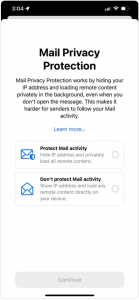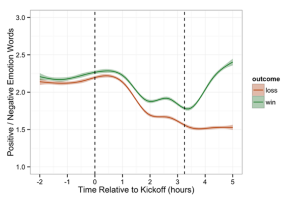![How to Write Blog Headlines People Will Actually Click On [Report]](http://cdn2.business2community.com/wp-content/uploads/2015/06/How-to-Write-Blog-Headlines-People-Will-Actually-Click-On-Report.jpg.jpg) Much has been written about how your blog content has become a key element in connecting to and interacting with your prospects and customers. However good your content may be, one vital fact remains – your headline is the gateway to your content and if you don’t understand what works, few people are likely to click on it.
Much has been written about how your blog content has become a key element in connecting to and interacting with your prospects and customers. However good your content may be, one vital fact remains – your headline is the gateway to your content and if you don’t understand what works, few people are likely to click on it.
Your headline is the first contact with your content, and must grab your target audiences’ attention. At this point you have no control – the reader does. They either click the link to your content or they don’t. The job of the content creator is to make sure that they choose the first option, and read and share your carefully crafted content.
How much time do you spend coming up with a killer title? Reading stats like this one by Copyblogger should make you sit up and take notice.
“On average 8 out of 10 people will read your headline but only 2 out of ten will read the rest of your content”.
Some experts recommend dedicating at least half your creative time to making the headline your first priority. As Abraham Lincoln would have put it – if he had a blog – “Give me six hours to chop down a tree and I will spend the first four sharpening the axe.”
We’re not just talking SEO and title tags here either. The simplest of words added to the title, even the addition of brackets, can have a major effect on outcomes. The report, Data Driven Strategies for Writing Effective Titles & Headlines by Hubspot and Outbrain, analyzed data from more than 3 million paid link headlines from Outbrain’s network, revealing insights into how titles can affect CTR, engagement levels, and conversions.
The key takeaway from the study? A dud title can stop your intended message dead in its tracks. However interesting or relevant your content may be, unless your title clearly conveys that the reader can find value by clicking through to your content, they won’t be going any further. On top of that, a clickbait headline that promises content it doesn’t deliver is doubly bad, breaking down the trust brands need in order to connect with consumers.
While all of the above is important information, it’s not ground breaking. What’s more interesting, however, is the analysis of the relative success of the words and symbols we all regularly include to entice readers to consume our content. Keep in mind as you consider the stats that, as the report authors highlight, their research is based on solely B2B data. Words that aren’t effective in one sector might be perfect for another audience. Be prepared to try things out and as ever, test and test again to see what works for you.
The Whos, Whys and Hows of the Click Through
As this graphic from the study illustrates, three kinds of headlines stood out as attracting significantly more clicks:

- Headlines with bracketed descriptions of the content performed 38 percent better than those without. For example, Power Your Cold-Calling with Social Recon [Webinar] – informs readers that an interesting webinar opportunity awaits.
- People respond to visuals so it’s no real surprise that headlines containing the word “photo (s)” have a positive effect on click rates.
- Titles that include the word “who” generated an increase of 22 percent whereas “why” intrigued readers less decreasing clicks by 37 percent. For example “Who Else Wants More….” suggests that you have knowledge that others have already consumed, and that your reader needs to have.
On the other hand the inclusion of many of the more common words and phrases we regularly stuff our titles with had a negative affect:
- A suggestion that the content includes instructions prompted reader aversion with “how to” and “tip” reducing CTR by 49 percent and 59 percent respectively.
- Similarly a suggestion that something is “easy,” “simple” or “best” can have a negative impact. “Magic,” “trick,” “amazing,” and “secret” all had a negative impact on CTR.
- Speaking directly to readers with “you,” “your” and “you’re” appears to be a turn off.
- Headlines with an urgent call to action such as “need” and “now” generated a lower CTR than titles without them.

It seems certain words can be a turn-off for readers. Perhaps the problem here lies with their overuse among the click-baiters and publishers who have eroded trust by raising our expectations and repeatedly letting us down.
A deeper analysis of the success of adding a bracketed description revealed that while brackets led to an overall increase in post views, the keyword included in them has a major effect on performance.

The bracketed term, provided it’s accompanied by a clear description in the rest of the title, tells the reader what they can expect to find if they follow the link. The offer of a “template” proved to be an overwhelming attraction in the study. This could have been due to the business bias in the research data, so consider what will work for you and your area of expertise.
Words that Engage Your Audience
The study also looked behind the click at the which words in the headline went on to engage with readers. This was measured by looking how many additional pages of content were viewed per unique visitor after the first click.
The use of “photo” and brackets in a title continued to have a positive effect, the most amazing result though was the use of the word “amazing.”

Measured by page views the inclusion of the word “amazing” has a powerful positive impact on engagement. The report concludes that although “amazing” might only attract a small audience, they are readers who are likely to be more engaged. Once again this is likely to be a horses for courses phenomenon, so play around with it to see what works for you.
Unsurprisingly all of the other words that deter clicks seem to also reduce engagement to a greater extent, including negative superlatives such as “worst’” and “never.”

From Clicks to Conversion
The ultimate purpose of content marketing is to get your reader to take some action beyond his or her original click, to interact with you with the aim of gaining a customer. To this end, two features stood out in achieving conversions – telling the reader they “need” something, and again, the bracketed clarification.

The brackets makes sense with conversions as the reader has only got this far because they have a clear picture of what is on offer. The use of “need” is interesting though, as it’s a turn-off for CTR and engagement but a clear winner with conversions.
The research tells us that what deters initially can seal the deal at the end of the line. It’s not as simple as using words that get a click after all. You might need to turn away large numbers of potential readers to attract the ones you really want. Definitely not an easy balance to strike.
When it comes to the optimum title length for engagement and conversion the study gives us some common sense advice:
- If you are looking for shares on Twitter, leave room for retweets.
- Use less than 65 characters to avoid shortening in search engine results.
- Put vital information at the start of the title.
As an additional thought, Kevan Lee at the Buffer Blog (you’ll find the link in other resources below) quotes research suggesting readers tend to absorb only the first three and the last three words in a title.
Blog post headlines and their composition is clearly a complex topic where you will find a host of often conflicting advice. This article at ProBlogger for example advocates using words like “quick,” “easy,” and “simple” frequently to tap into the “Internet culture.”
Some even go so far as to construct a formula for headline success, like Lenka Istvanova has done at Koozai:
Numbers + Adjective + Target Keyword + Rational + Promise
Don’t ever let anyone tell you that writing headlines is easy – it’s not!
The key thing to always remember is the best solutions will vary according to YOU. Your industry, campaign goals, subject matter, and preferred distribution method. Does this study provide all of the answers? I don’t think so. But it does provide a lot of food for thought, and will help you refine your own approach. In this article, Brian Clark at Copyblogger sums it up nicely, citing the trainers at American Writers and Artists: Headlines should be useful, unique, instill a sense of urgency and be ultra-specific.
So how did I do with my title to this post? I started with a “How to” — that could be a negative according to the study. But the title then describes the subject matter, suggests reading it will solve a problem, and uses brackets to indicate a well-researched source.
That works for me and, if you are still here at this point, I guess it worked for you too!
I’ve listed some other resources below that you might find useful, and you can download this report in full at, Data Driven Strategies for Writing Effective Titles & Headlines.
All graphics are from the study.
Photo Credit: filipinooutsourcers via Compfight cc
(234)
Report Post





